Three-engine hawk "Reggia Aeronautics". Part III. In the sky of World War II
8 April 1939, the Italian troops invaded Albania. The "triple motors" also contributed to the operation. But not all cars went flying with bombs. So, the crews of the 11 and 12 regiments landed paratroopers from their S.79 at the airfield in Tirana to quickly capture the capital of Albania.
Italy entered the World War 10 on June 1940, declaring war on England and France, only parts of the Wehrmacht launched an offensive against Paris, Brussels and Amsterdam. By that time, the S.79 was in service with the 14 regiments of the Italian Air Force, being considered the main bomber of Mussolini. The total number of “humpback” bombers was by June 1940-th 612 machines, or two-thirds of all multi-engine aircraft. In addition to the combat regiments, part of the S.79 was located in flight schools and re-training centers. A few "Savoy" was used as a staff aircraft for the generals. These machines received the S.79ТР index and were distinguished by armchairs installed in the bomb bay (with embedded doors).
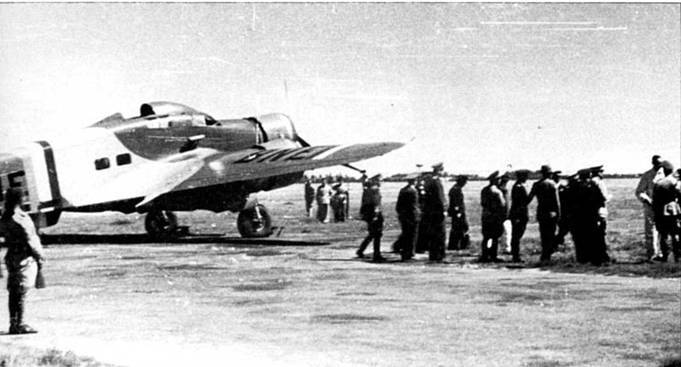
Already on June 10, the “Hawks” of four regiments, having flown up in Sicily, were bombed by British targets in Malta. At the same time, part of the cars went towards France, attacking Marseille and Corsica. On June 12, a dozen "hunchbacked" 32nd regiments appeared over Tunisia, destroying fuel depots and several enemy aircraft at Bizerte air base. In the planned attack of the Italians from Libya to Egypt, "seventy-ninth" was assigned the main role in aviation air support. The commander-in-chief of the Italian troops in North Africa, Marshal Balbo (the most famous Italian pilot) was counting on the crews of the Hawks, but Balbo himself died on S.79. Moreover, his plane was shot down on June 28 over Tobruk by mistake their own anti-aircraft gunners. The Italians did not publicize such an unfortunate incident, officially announcing the death of the Marshal in an air battle.
The offensive on Egypt began on September 13th. However, instead of the victorious march of the Italians, almost complete defeat awaited. In the chaos of retreat, S.79 was even tried to be used as attack aircraft to attack armored vehicles and tanks. And although the losses were small, there was practically no sense from such sorties. The lack of spare parts also caused a lot of trouble. Therefore, the 33rd regiment had to be withdrawn from Africa, replacing it with the 41st, having flown from Sicily. But these movements did not change the situation - by mid-December, the last Italian units left Egypt, leaving piles of broken equipment on the land of the pharaohs. The English also got 30 broken Hawks abandoned at field airfields.
A similar fate awaited Savoy in Ethiopia. The Horn of Africa bombers traveled from Italy by long-haul route with one refueling. But after the capture of most of the Libyan airfields by the British, they had to fly 2700 km from Benghazi to Asmara without landing. 16 S.79 managed to ship this route, and after the surrender of Benghazi, the air bridge stopped working. There was practically nothing to deliver spare parts and fuel, and by the spring of the 1942, only three S.79 remained in the ranks.
When the Duke of Aosta ordered the surrender of all Italian units in Ethiopia, Eritrea and Somalia, the Allies got the last surviving Hunchback, who often flew to South Africa to demonstrate the three-engine trophy.
In 1941, the "seventy-ninths" were still the main bombers of the Reggia Aeronautics, but their number in the regiments began to decrease. The plane ceased to meet the increased demands of the military, and its shortcomings, invisible in Spain, after the battles with the newest allied fighters, were no longer concealed. Weak and poorly placed defensive weapons on primitive turrets, lack of armor and tested tanks, weak construction and one-piece wing (which made field repairs difficult) —all this made the former record holder a mediocre and outdated bomber. And although the serial production of the S.79 continued (the losses in the shelves had to be replenished), a new three-engined Kant Z.1007 was prepared to replace the Hawk.
While the first regiments were reequipping on the "Kanty", the "humpbacks" continued to carry out military service, having successfully mastered another military profession - the torpedo bomber. Proposals on the development of S.79 anti-ship modifications arrived back in March 1937-th. A standard bomber was equipped with a lower assembly for a torpedo and was tested in November of the same year at the base in Gorizia. The discharges were successful, and soon the variant with a pair of torpedoes under the fuselage was already being tested. However, with such a load, the control of the heavy machine deteriorated and for the series the first option was recommended. Already at the end of 1939, all the bombers, in addition to standard equipment, were equipped with a lower unit for hanging one torpedo.
The first combat unit of the torpedo bombers was the experimental squadron in Gorizia, receiving five S.79. The squadron also opened a list of sorties against allied ships. Five “Hawks” flew on August 14, 1940 to Benghazi, from where the next night went on the attack of the English fleet in Alexandria. Not a single torpedo hit the target, and the first success came to torpedo bombers on August 27. Lieutenant Buskalya managed to torpedo a cruiser to the northeast of Sidi Barrani. After the loss of one aircraft, the squadron received the nickname "Four Cats" and became the core of the newly formed squadron No. 278 - the first full-fledged unit of torpedo bombers.
A special center for training pilots in the use of anti-aircraft aircraft was formed at the base in Gorizia, and soon a second similar center began work in Capodichino. The instructors had enough work to do, since torpedo bombers received all the new units. In December, the 1940 squadron was formed by 279, and by November five more units. Squadron in pairs united in groups. Later transferred to the torpedo and part of the bomber regiments.
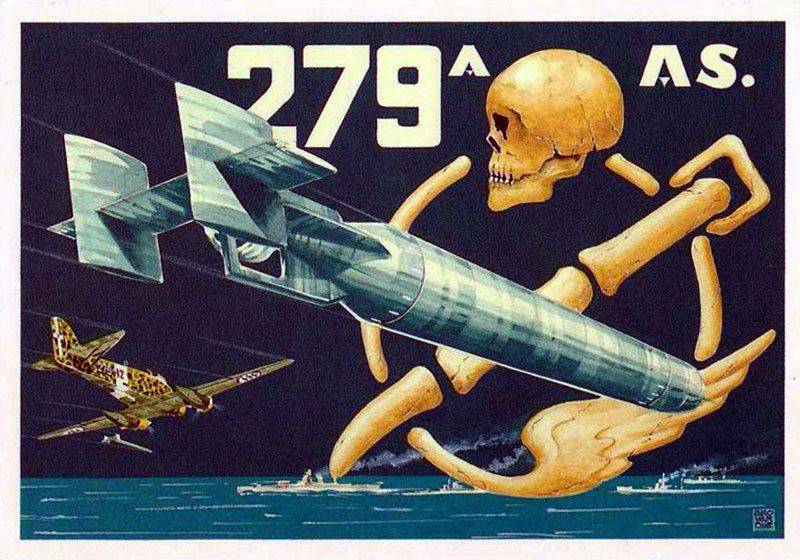
By November, 1942 in the ranks had 147 torpedo bombs, which were based literally in all directions - in Italy, Sardinia, Sicily and North Africa. Armed with a torpedo, the Hunchback, driven by an experienced pilot, was a serious threat to the transports. And soon the Italian newspapers wrote with delight about the brave pilots, repeating the names of Buscaglia, Fajoni and Di Bella. However, when attacking well-defended convoys, the low-speed S.79 with a torpedo under the “belly” represented an excellent target for anti-aircraft gunners and fighters. So, 27 September 1941-th from the task did not return immediately 14 S.79 two squadrons.
To reduce the loss of speed from the protruding torpedoes, the engineer De Luca suggested using injection in the cylinders of ethanol engines to increase power. The installation of the system gave a short-term increase in speed (the supply of alcohol was enough for 20 minutes) for 50 km / h, but at the same time the resource of the motors sharply decreased. As for the rest, the “Hunchback” - a torpedo bomber practically did not differ from the mass-produced cars that left the assembly line five years ago.
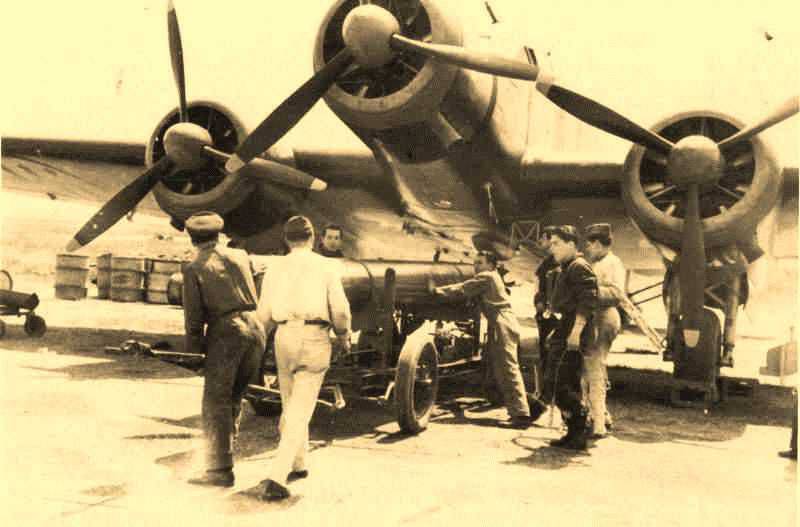
In the series went S.79bis, on which the improvements were not so radical. The Bisa prototype took off for the first time in March of the 1943, differing in the new Alfa-Romeo 128R.18 engines with SIAI 32 propellers and flame arresters on the exhaust pipes. The motor developed on the take-off 950 hp, having a lower altitude, which was more suitable for the attack of torpedo bomber from a strafing flight. The lower gondola was dismantled (it is not needed by the torpedo bomber), and an additional tank was installed in the bomb bay and installed on the 1000 (if necessary, on the 2300 l). In addition, they replaced the radio equipment with a more modern one.
Especially for the attack of the British ships in Gibraltar prepared the first nine S.79bis. The planes flew to the nearest base to Marseilles, and the crews began to prepare for the responsible mission. The night flight was scheduled for 19 on June 1943, but only two Savoy went towards Gibraltar. It turned out that the real fuel consumption of the Alfa Romeo 128 engines significantly exceeded the figures that the navigators used to calculate the range. Therefore, even 5000 l gasoline could not be enough for the return journey.
Two of the most experienced crews, Kimichchi and Fajoni, were sent to the distant route. But only Kimicci was able to return to Marseille almost with dry tanks, and the second S.79bis, having spent all the fuel, sat down in Spain. On June 24, eight S.79bis torpedo bombers remaining in Marseilles attacked the Oran naval base in Algeria, losing one aircraft.
The new version of "Hunchback" decided to release a small series, and besides this, part of the already flying S.79 was also remade into S.79bis. By that time, the release of the fairly outdated "seventy-ninths" continued at the firms "Reggiani" and "Aeronautica Umbra", and each of the companies received an order for 50 S.79bis. The small contract for 10 "bisov" also signed the company CNA.
Despite the continued series, the number of "hawks" in the combatant regiments decreased markedly. By 1 June 1943, the Air Force had only 74 three-engined in service, only a third of them were combat-ready aircraft.
After the landing of the Allied forces in Italy, the country split into two parts. On different sides were the surviving Savoy. In the south, occupied by Anglo-American troops, 29 S.79 remained. All these cars after repair were included in July of the 1944-th into the 3-th transport regiment. The regiment "hawks" did not participate in further battles, carrying various loads, and the 24 vehicles quietly reached the end of the war.
Most of the S.79 remained in the north, where Mussolini (freed by Otto Skorzeny’s paratroopers) formed the Italian Social Republic, which continued to consider itself an ally of Germany. Here was also a large part of the serial aircraft factories, in which all the surviving "humpback" decided to remake in S.79bis. Firms Caproni and Augusta received an order for 18 modified bomber, although subsequently, five of them broke up due to sabotage, and six were still in the shops when the war ended. Two new BISs were assembled at Reggiani, and at SIAI, 50 bombers received new engines and the S.79bis index.
In the future, part of the "encores" went through an additional upgrade, after which they were sometimes called S.579. A pair of 12,7 mm machine guns was installed on these machines for firing at the sides. In addition, for the attack of ships on some torpedo bombers instead of the front fixed machine gun installed 20-mm gun. And the equipment was replenished with autopilot, radio altimeter and gyrocompass.
At the beginning of 1944, all the torpedo bombers entered the group Buscaglia, named after one of the pilots of the famous squadron Four Cats, who died at the end of 1942 off the coast of Algeria. The group consisted of three squadrons, and was commanded by Captain Fajoni (another pilot from the Quartet Cats). 10 March 1944, the “Buscaglia” for the first time attacked the Allied ships at Anzio. Outdated torpedo bombers were not easy to fend off the newest Allied fighters, and losses were growing every day. After the battle, Nettuno did not return to the base himself the commander of the group Fajoni. He was succeeded by Major Marini, who on the night of 5 June 1944 himself led the 10 torpedo bombers to Gibraltar. Italians managed to sink two ships under cover of night and damage another pair. To search for enemy ships, the group flew out before the start of the 1945 of the year, sinking the last 5 transport of January.
After the end of the war in Europe, all the surviving S.79 continued to fly for some time in the Italian Air Force as auxiliary aircraft - transport, training or towing targets. Part of the “Hunchbacks” was sent to the flight school in Frosinone, and the rest were sent to the 46-th transport regiment near Rome. The last cars flew here before 1948, after which they began to be replaced by American transport workers Beach (Veoh) C-45. By that time, they continued to effectively exploit the Spaniards left over from the S.79 civil war, but the “Hawks” in Lebanon remained in the flying condition the longest.
The Lebanese Air Force was formed in 1949, and the government bought four S.79 in Italy. The order was received by SIAI, but the mass production of the "humpback" has already stopped. The aircraft collected in Frosignon from the remaining mothballed fuselage and spare parts removed from the other "seventy ninth." By October, the 1949-th all four with Alfa-Romeo 128 engines finally arrived in Lebanon, where it flew until the early sixties. The Lebanese "Hawks" did not have weapons, were used as multi-purpose transport aircraft. The last government of Lebanon written off S.79 donated 1966 Italy in December. And now the “Hunchback” with marked identification marks of the 278 squadron (and with the personal number of the pilot of Buscaglia on the fuselage) proudly takes its place in the museum’s exposition stories aviation.
Not surprisingly, the three-engine "Savoy" always crowded with visitors. For historians and aviation enthusiasts, the Hunchback has become a real symbol of the Italian aviation of World War II. Having started his flying career in 1935 with records and long-haul flights, the bomber A. Marchetti remained in service with Reggie Aeronautics for more than 10 years, causing a lot of trouble to the allies. And with the total number of cars released (1458) no other Italian bomber can match.
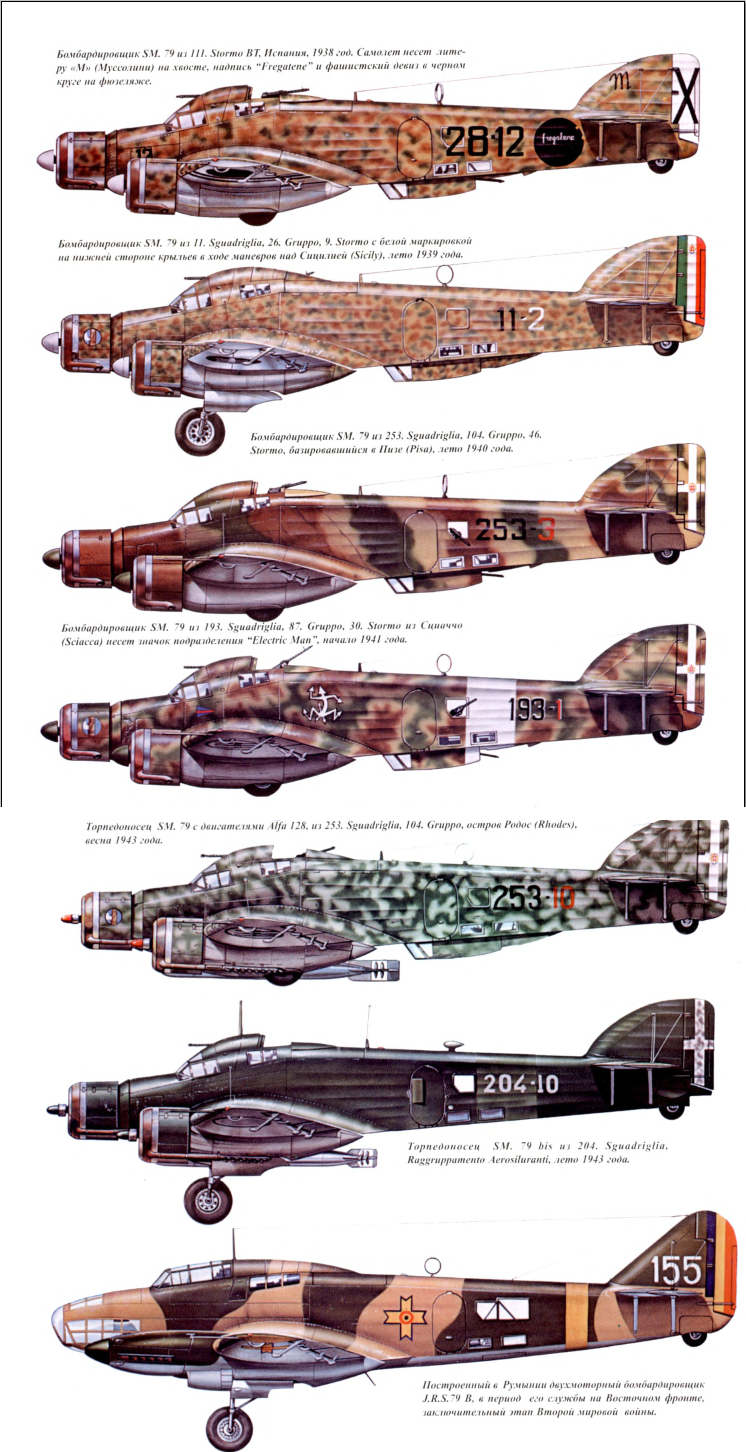
Sources:
Kotelnikov V. Savoy (SIAI) S.79 // World of Aviation. 1993. No.1. C. 7-13.
Kotelnikov V. Savoy (SIAI) S.79 // World of Aviation. 1993. No.2. C. 11-17.
Kolov, S. On the S.79 aircraft family // Wings of the Motherland. 2002. No.2. C. 14-16.
Ivanov S. Savoia Marchetti S.79 // War in the air. 2003 No.104. C. 2-3, 6-11, 15-33, 46-48.
Obukhovich V., Kulbaka S., Sidorenko S. Planes of the Second World War. Minsk: Potpourri, 2003. C. 319-320.
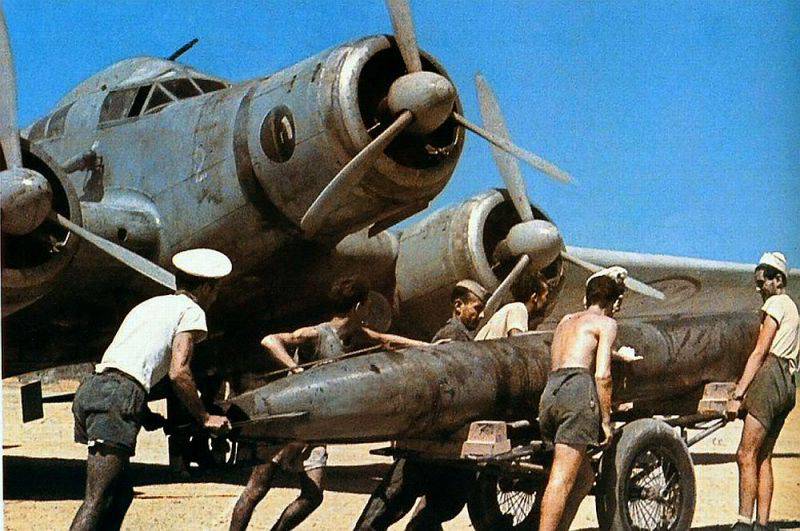
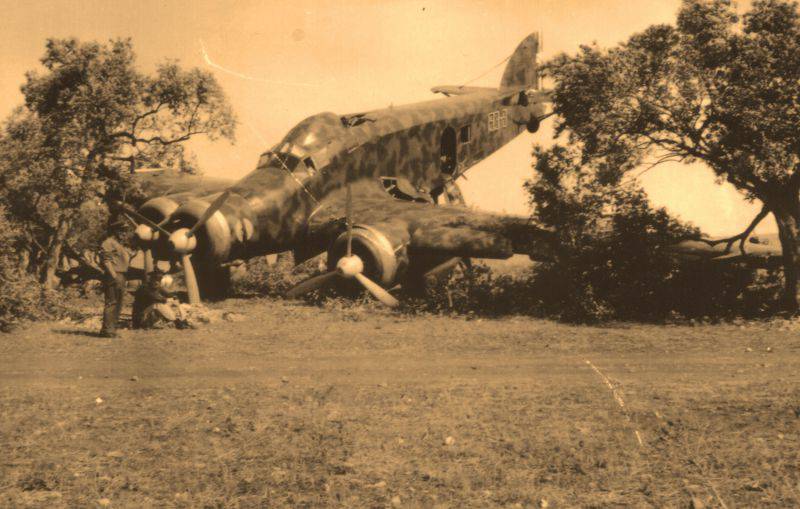
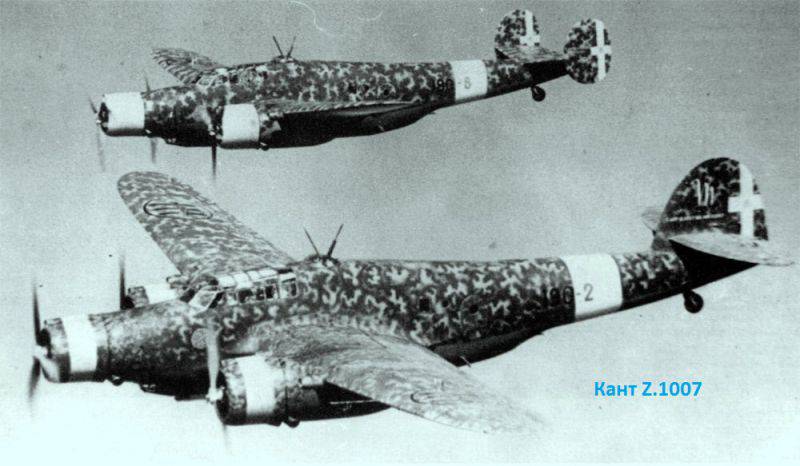
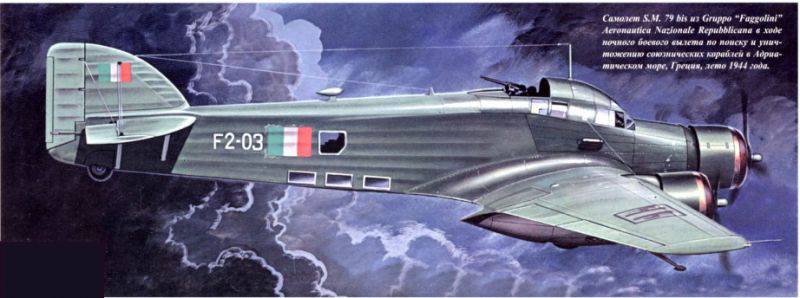

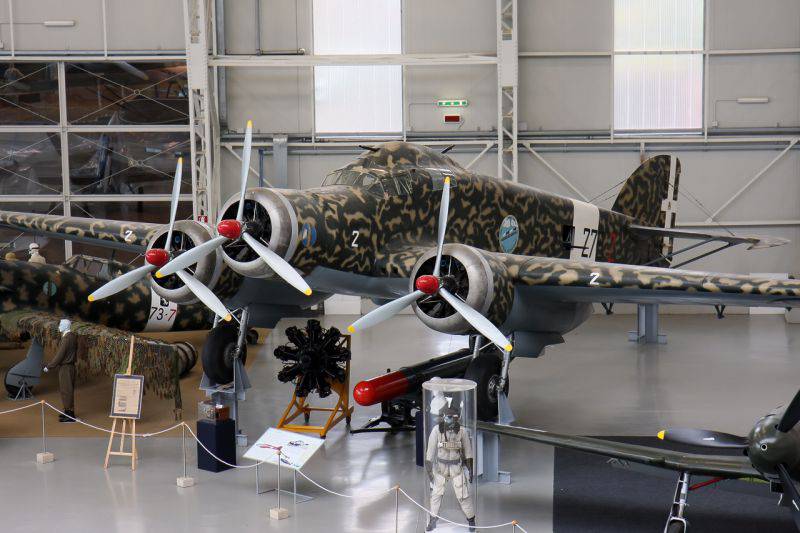
Information